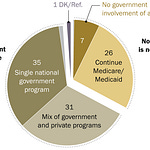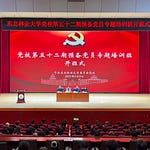Let’s say the quiet part out loud. Canada has shackled itself to a neighbor that increasingly acts like a bully.
For decades, the Canadian economy has functioned like a loyal sidekick to the United States. When Washington says jump, Ottawa rarely asks why. But in a world fractured by trade wars, supply chain disruptions, and weaponized tariffs, it's no longer smart to rely on a single partner.
A recent Globe and Mail opinion piece titled “Let’s free ourselves of the U.S. and forge closer ties with China” reignited this conversation. And rightly so. What exactly is Canada gaining from this lopsided partnership with the United States? And what opportunities are being ignored with China?
Strategic Paralysis: Canada in America’s Shadow
Roughly 75% of Canada’s exports go to the United States. That’s not just trade—it’s dependency.
One policy change in Washington can throw entire Canadian sectors into crisis. Tariffs on aluminum, dairy, or electric vehicles aren’t abstract—they’re strategic pressure points.
And the cost of compliance isn’t just economic.
Remember when Canada arrested Huawei CFO Meng Wanzhou at the request of the United States? That move had nothing to do with Canadian law or interests. It was a political favor. And the blowback was swift. China responded with export bans on pork and canola, causing losses near $1 billion per year.
That wasn’t diplomacy. That was a strategic mistake.
What China Can Offer Canada
This isn’t about ideology—it’s about realism.
China has 1.4 billion consumers, massive demand for food, minerals, energy, and education. Canada has exactly that.
China is also leading in renewable energy, EVs, AI, and advanced tech. Partnering with China in areas like clean hydrogen, carbon capture, and critical minerals would benefit Canadian innovation and create jobs.
And unlike the United States, China hasn’t asked Canada to pick sides in every global conflict.
What Canada Can Offer China
Canada isn’t just a junior partner wrapped in flannel. It’s a resource-rich, tech-capable, stable democracy with strong institutions.
Here’s what Canada brings to the table:
Reliable energy: LNG, uranium, and hydrogen
Agricultural exports: wheat, beef, canola
Clean tech and minerals: cobalt, lithium, graphite
Education and research: globally respected universities
A trustworthy legal and investment environment
China needs secure, transparent, long-term partners. Canada fits that profile.
The Goal Is Balance, Not Surrender
Diversifying trade doesn’t mean abandoning allies. It means building alternatives.
Canada can keep strong ties with the United States while also engaging with China, ASEAN, Africa, and others. That’s what real sovereignty looks like. Being locked into one market is a vulnerability, not a virtue.
It’s not about choosing between democracy and dictatorship. It’s about protecting national interests.
Final Thought: A Smarter Future Starts with Strategy
Canada needs to stop playing other people’s games. Arresting Meng Wanzhou was a mistake. Ignoring China’s rise is another.
The U.S. will always be a neighbor. That doesn’t mean it should dictate Canadian policy.
A country that wants to lead must act like one. Trade is not about loyalty. It’s about leverage.










